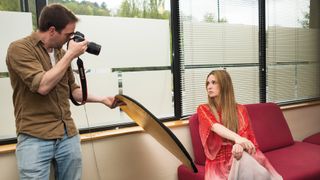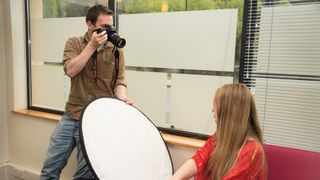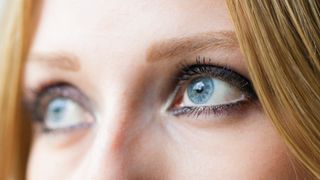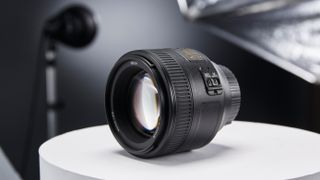Take stunning natural light portraits
No need for expensive studio flash kit

You don’t need lots of expensive lighting equipment to shoot beautifully lit portraits, just soft, directional light. Why soft? Because soft light is more flattering than hard light. Why directional? Because the direction helps to give the face depth by creating highlights and shadows.
For these two qualities, we need look no further than the nearest window. The larger a light source is, the softer the light it creates. Because windows have a fairly large area, the light they offer is soft and flattering for portraits. Any window will do, as long as the sun isn’t shining directly through it.
Of course, window light comes from one fixed position. But that doesn’t mean we’re restricted to one direction of light. By moving the camera position we can control how light falls across the subject and come up with a variety of looks.
Step-by-step: Window light portraits
1. Watch for sunlight

If the sun is shining through the window the light is hard, and – as you can see here – not very flattering. North-facing windows are best for those of us in the northern hemisphere, as the angle of the sun means they’re never hit with direct sunlight.
2. Turn off the lights

Before you shoot, turn off indoor lights. Artificial lighting has a different color temperature to daylight and the colors can look muddled if we mix them together. Of course, it doesn’t matter if you intend to convert the image to black and white.
3. Position your subject

Position a person side-on to a window, angled so that they’re turned slightly towards the light. The light will fall softly across the face. One side will be nicely highlighted, with a gentle fall off into soft shadows on the other side.
4. Use a reflector

If you want to lift the shadows on the dark side of the face, use a reflector, placed opposite the window, to bounce some light back at the face. No reflector? A piece of white card, a white sheet, or a board wrapped in tin foil will all bounce light.
Get daily insight, inspiration and deals in your inbox
Get the hottest deals available in your inbox plus news, reviews, opinion, analysis and more from the TechRadar team.
5. Look for catchlights

Eyes are the most important aspect of a portrait. Window light provides a bank of light that usually creates lovely rectangular catchlights that make eyes sparkle. Ask the subject to angle their head towards the window so that it’s reflected in their eyes.
6. Focus and shoot

In Manual or Aperture Priority mode set a wide aperture. Focusing is critical when using a shallow depth of field, so be sure to position your focus point over the subject’s closest eye. Set the ISO high to obtain a shutter speed of at least 1/100 sec for sharp shots.
Using wide apertures

While by no means essential, a lens with a wide maximum aperture, such as f/2.8, is useful for natural-light portraits, as it means we can be assured of a fast shutter speed to prevent camera shake and opens up the lower ISOs to help keep image noise to a minimum. It also means we can shoot with a really shallow depth of field for lovely soft, blurred backgrounds. Although this does mean precise focusing is vital, so make sure you focus accurately on the nearest eye.
